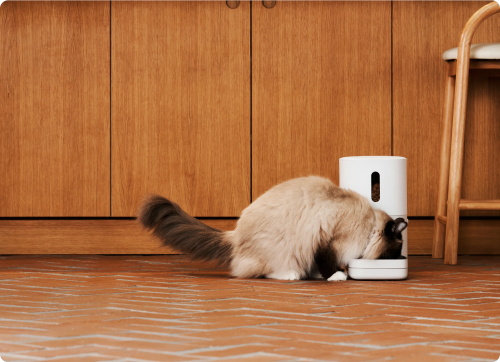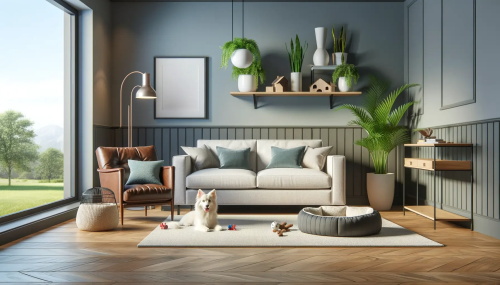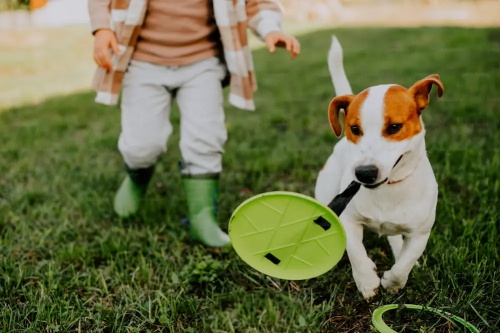Smart Feeders and Hydration Devices: Balancing Convenience and Pet Health

In today's digital age, the bond between people and pets is strengthened not only by love and companionship, but also by innovation. Pet owners are embracing technology to enhance their pets' quality of life, simplify daily activities, and promote their overall well-being. Among the most transformative inventions in recent years are smart feeders and waterers, which are redefining how pets are fed.
These smart tools combine automation, precision, and data insights to create a feeding ecosystem that's both convenient for owners and beneficial for their animals' health. Beyond the superficial convenience of scheduling meals via smartphone, the real significance lies in how these devices improve the nutrition, hydration, and long-term health of millions of pets worldwide.
The Evolution of Pet Feeding
Traditionally, feeding a pet was as simple as filling a bowl. But as pet care becomes increasingly complex—especially for busy professionals juggling work, travel, and family—new challenges arise. Pets need regular meals. They need portion control. They need hydration to adapt to their changing needs and environment.
The entry of smart technology into this field isn't just a novelty; it's a practical solution. Modern smart feeders and hydration systems are equipped with sensors, Wi-Fi connectivity, cameras, and AI-powered monitoring systems. Together, these technologies transform mealtime into a carefully managed process designed to promote healthier habits and stronger owner-pet relationships.
Smart Feeders: More Than Just Automatic Food Dispensers
Smart feeders represent one of the most impactful innovations in contemporary pet care. At first glance, they appear to be simple automatic feeders, but their capabilities go far beyond convenience.
1. Precision Feeding
Smart feeders allow owners to precisely control feeding amounts and timing. This is especially important for pets prone to obesity or with special dietary needs. By setting precise feeding amounts and schedules, owners can maintain a regular routine, boost metabolism, and prevent overeating.
Some advanced feeders even learn their pet's eating habits through sensors or built-in scales. When a pet's appetite changes—whether due to stress, illness, or aging—the device alerts the owner, allowing early detection of potential health issues.
2. A lifesaver for busy lives
Modern life doesn't always align with a pet's feeding schedule. Whether owners work long hours, attend classes, or travel frequently, smart feeders ensure pets eat on time every day. With remote access via a mobile app, owners can adjust feeding schedules or add extra portions as needed with just a few taps.
For households with multiple pets, smart feeders can even distinguish between pets using RFID tags or facial recognition, ensuring each animal receives the correct type and amount of food—no more food theft between cats and dogs.
3. Building emotional connections through technology
While feeding is primarily a physical need, it's also an emotional connection. Many smart feeders now allow owners to record voice messages that play at mealtimes, allowing pets to hear familiar sounds when they're away. This seemingly insignificant feature can reduce stress and separation anxiety for pets, especially dogs who rely on their owners' voice cues.
Smart Hydration Devices: A Revolution in Drinking Behavior
If food is fuel, then water is life—ensuring pets drink enough water is just as important as feeding them. Unfortunately, many pets, especially cats, don't naturally drink enough, which can lead to kidney problems, urinary tract infections, or dehydration. Smart hydration devices are designed to address this problem.
1. Flowing Water Encourages Natural Drinking
Pets instinctively prefer flowing water, finding it fresher and safer to drink naturally. Smart water dispensers replicate this characteristic with a continuously circulating system, keeping the water well-oxygenated and appealing. By mimicking a stream or spring, they encourage pets, especially cats, to drink more frequently, thereby improving hydration levels.
2. Monitoring and Maintenance Made Simple
These hydration systems not only dispense water but also track water levels, temperature, and consumption. Through mobile connectivity, pet owners can receive alerts when water levels are low or the device needs cleaning. Some systems even analyze a pet's drinking habits to help veterinarians detect early signs of kidney or bladder problems.

3. Health and Hygiene at the Core
Smart water dispensers often feature multi-layered filtration systems to remove impurities, hair, and odors, ensuring pets always have clean, great-tasting water. Many also feature UV sterilization or antimicrobial coatings, ensuring hygiene even in warm environments where bacteria can thrive.
For owners, this means fewer refills, cleaner water, and peace of mind that their pets are drinking safely.
How Smart Technology Improves Pet Health?
The real magic of these devices lies not only in their automation but also in their ability to collect and interpret data. Over time, smart feeders and drinkers can provide a comprehensive understanding of a pet's eating habits—how much they eat, how often they drink, and whether their eating habits are changing.
1. Early Detection of Health Issues
A sudden decrease in appetite or water intake is an early sign of illness. By tracking data, smart systems can notify owners and even share this information directly with veterinarians, enabling earlier intervention and treatment.
2. Weight Management and Nutritional Balance
For pets struggling with obesity, consistent portion control and a regular feeding schedule are crucial. Smart feeders support calorie control, while hydration monitoring helps promote metabolic balance. Ultimately, this leads to better weight management and overall vitality.
3. Reduced Stress and Behavioral Issues
A regular routine can be comforting for animals. Smart devices provide predictability—even when life gets busy, food and water are always available on time. This consistency can reduce the anxiety and behavioral issues often associated with irregular feedings.
Convenience Factor: For People and Their Pets
Beyond the health benefits, smart feeders and waterers can simplify daily life for pet owners. Instead of rushing home to feed their pets or worrying about them during a long workday, owners can manage everything remotely. Many systems offer live video streaming, allowing users to check on their pets and ensure they are eating and drinking properly.
Furthermore, these devices minimize human error. No more double-feeding, forgetting water bowls, or guessing at portion sizes. Everything is automated, trackable, and accurate.
For frequent travelers, this technology will be a game-changer. With adequate food and water, smart systems can safely sustain pets for days, giving owners the flexibility to travel without stress.
Design and Sustainability: The Future of Smart Pet Devices
Beyond functionality, modern smart feeders and watering systems are increasingly focused on environmental sustainability and design. Manufacturers are turning to recyclable materials, energy-efficient motors, and durable filters. Some even use solar power or biodegradable components to appeal to eco-conscious pet owners.
From a design perspective, today's devices blend seamlessly into the home. Their minimalist aesthetic, quiet operation, and modular construction make them both aesthetically pleasing and easy to maintain.
This shift reflects a broader trend toward sustainable, human-centered technology that prioritizes both aesthetics and ethics.
Future Trend: Artificial Intelligence and Personalized Pet Care
The next generation of smart feeders and watering systems is already in development and will become even smarter. Artificial intelligence and machine learning will revolutionize pet care by anticipating pets' needs and customizing feeding plans based on their behavior, age, and health.
Future systems might use biometric sensors to analyze a pet's physical condition and automatically adjust food portions to maintain an ideal weight. Other systems might integrate with wearable pet trackers or smart collars, forming a connected ecosystem that monitors everything from activity to hydration in real time.
Imagine a system that not only provides your pet with food and hydration but also adjusts based on seasonal changes, health data, and emotional signals. This is where smart pet technology is heading—a comprehensive, personalized approach to wellness.



